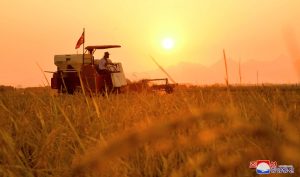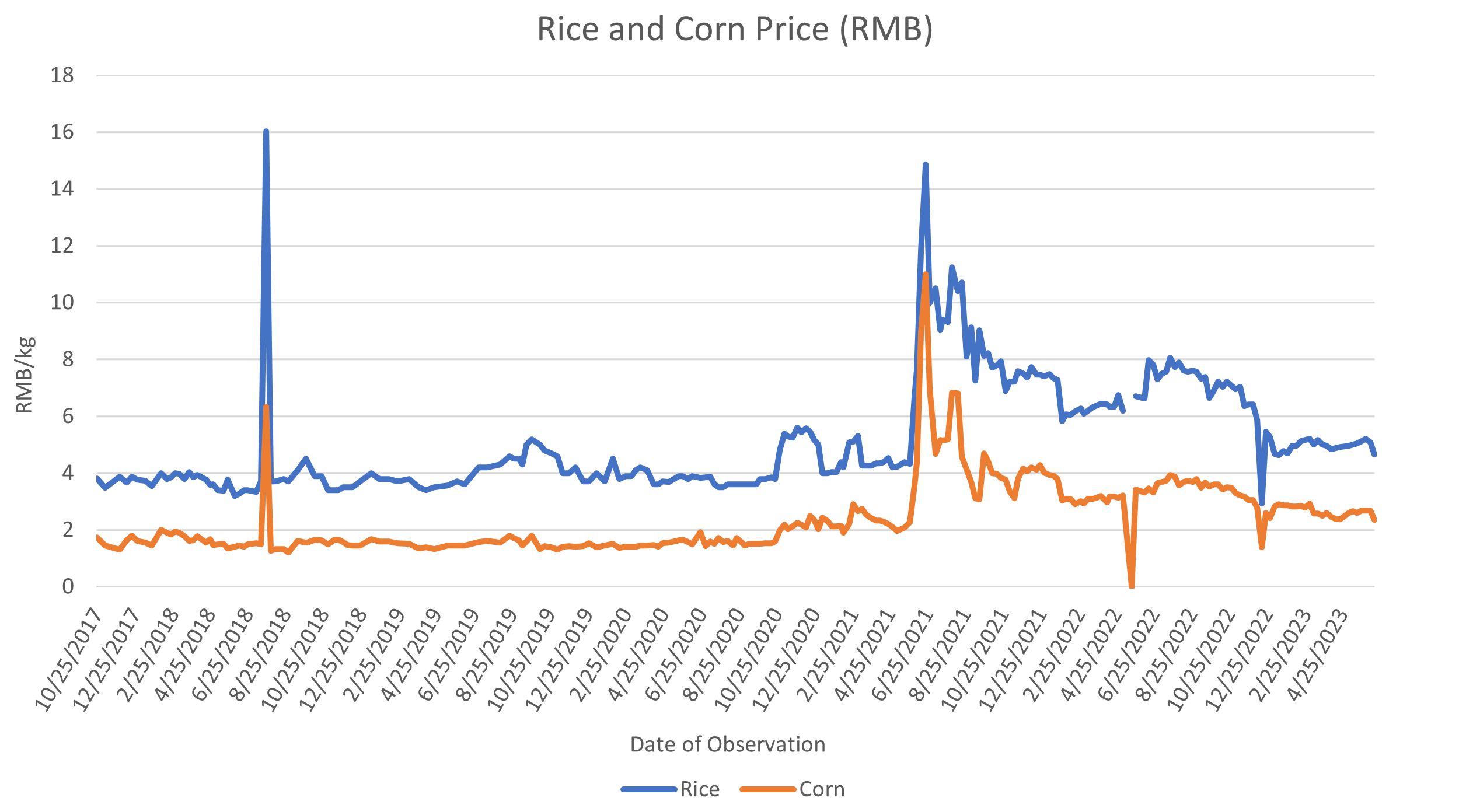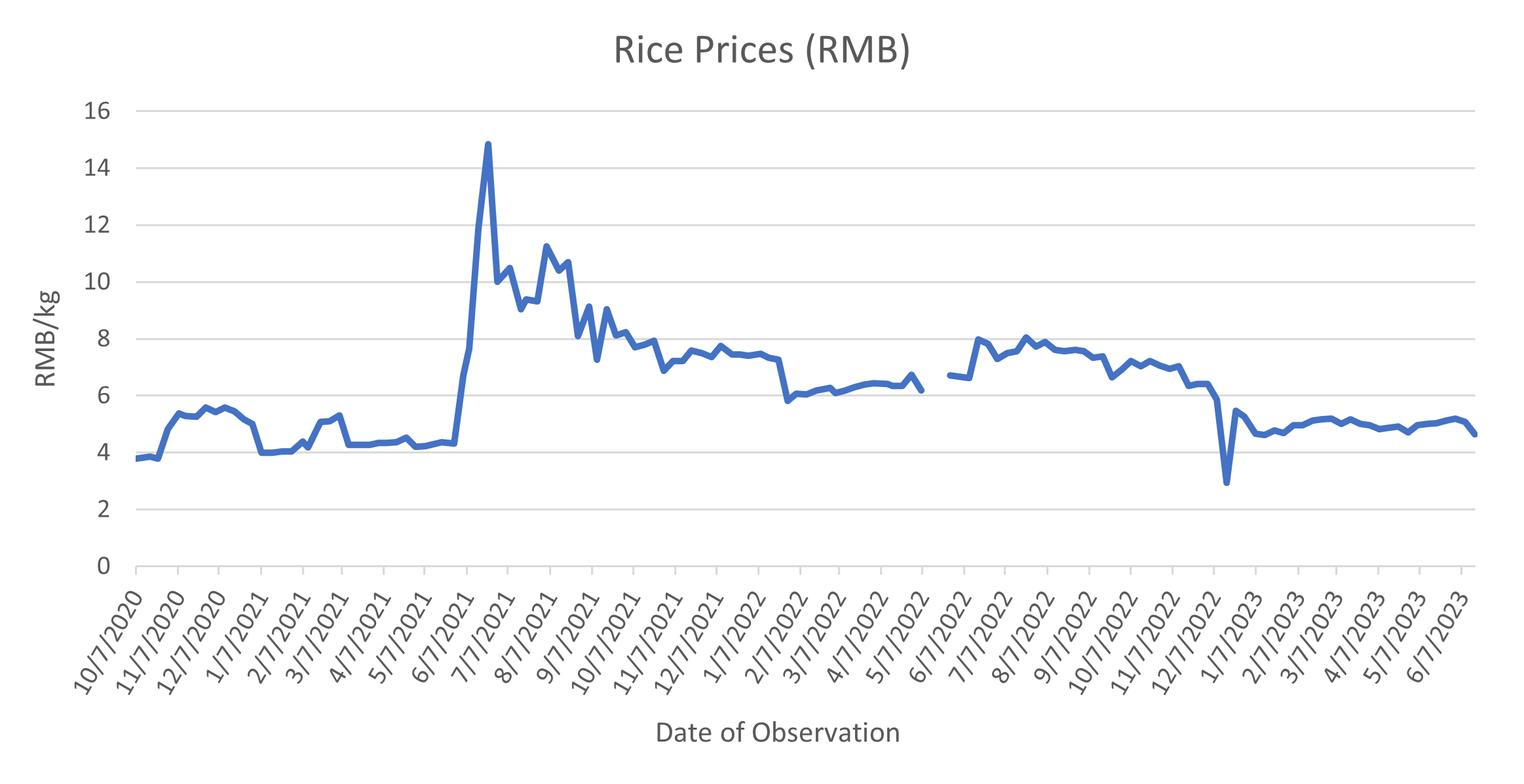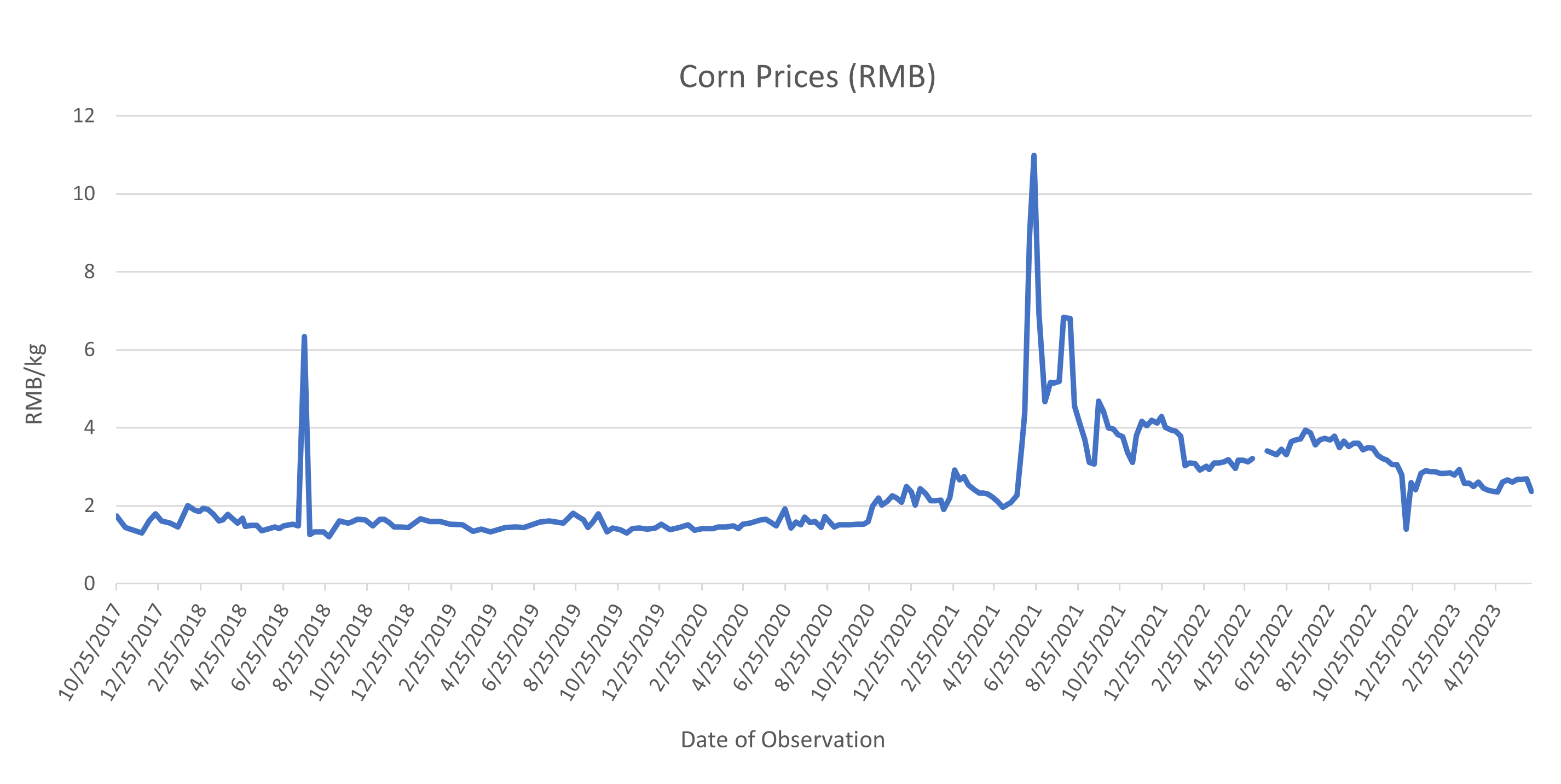North Korean Market Prices Suggest Serious Food Shortages
Recently, the BBC became one of few global outlets to succeed in interviewing ordinary North Koreans inside the country about the food situation, and the picture they painted is dire: starvation, empty markets and other signs of severe food shortages.

In the past few years, when reports of food scarcity have surfaced from North Korea, market prices have given remarkably little credence to the claims. However, this is not the case at the moment. When comparing current price levels with historical ones, the overall picture suggests that market prices, since the onset of the COVID-19 pandemic, and the resulting border closure by the North Korean government, have moved to a consistently higher level, which indicates that the country’s overall food supply is lower. While this does not provide us with a specific idea as to how severe the food shortage actually is, it does give quantitative evidence that food has become significantly scarcer since the onset of the pandemic.
Note on Sources
To examine the current food situation from a market perspective, this article uses market price data gathered and reported by Rimjingang (also written as Rimjin-gang), an online news outlet with sources inside North Korea that regularly publishes market prices. This specific data set was chosen because it is transparent and specific about where in the country the data comes from. Due to tightened border controls under Kim Jong Un’s tenure, information from inside North Korea has become even more difficult to access. Therefore, transparency about the data is crucial.
The price data almost exclusively comes from the region bordering China in the provinces of Ryanggang and North Hamgyong. The border region is different from the rest of the country in several crucial respects, with perhaps the most important being that it is much more involved in trade and smuggling with China than other regions. Nonetheless, different parts of the country are connected, and their economies, to some extent, are integrated with one another, with goods being transported around the country for sale. Although dilapidated infrastructure and harsh state regulations make internal travel difficult, the overall price trends in this region quite likely hold for the national level.
Market Changes After COVID-19
Prices fluctuate frequently in North Korea’s markets, but usually within a more or less fixed span. The following graph shows the prices for North Korea’s two main staple goods of rice and corn from 2017 until mid-June 2023. The prices are shown in renminbi (RMB, the most commonly used foreign currency in the border region) to check for inflation in the North Korean currency, the Korean People’s won (KPW).

The left side of the graph shows prices before COVID-19. Aside from a few insignificant bumps, prices hovered between 1-1.5 RMB for 1 kg of corn and 3.5 RMB for 1 kg of rice for the most part prior to the pandemic and fluctuated over time according to mostly seasonal patterns. Interestingly, although North Korea closed its borders in January 2020 to protect against the virus, prices did not really begin to increase until October of that same year.
However, over the course of the next few months, prices for both rice and corn climbed significantly.

Rice prices rose from their regular level to move between 4 RMB per kg and close to 6 RMB per kg in late 2020 and early 2021 and shot up drastically during the spring and summer before the fall harvest. Prices typically go up during these months, as they are during the lean season when the food storage starts to dry up, but the spreading awareness that the border wouldn’t open anytime soon may have also pushed prices up much further than normal. After shooting up to close to 15 RMB and remaining much higher than usual for several months, prices stabilized at an interval between 4-4.5 and 8 RMB from the fall of 2021 until the end of 2022, when prices moved to somewhere around 5 RMB, which is about a 1.5 RMB or 42 percent difference from the normal price level before COVID-19.
On the one hand, prices now are much more stable than last year’s fluctuations to very high levels. On the other hand, the price level is now consistently higher than before COVID-19, which impacts North Korean consumers. Higher prices would logically suggest that the supply has dropped.
We see the same dynamics in the price of corn. Graph 3 below shows the corn prices from the fall of 2017 until the latest observation in mid-June 2023.

Corn is a generally less preferred staple for North Korean consumers, meaning that people tend to increase their consumption of corn when food overall becomes more expensive. From hovering around 1.5 RMB per kg before the pandemic, the price of corn climbed significantly starting in late 2020 and had doubled by March 2021 when it hit 3 RMB. Prices continued to increase the rest of that same year and then went down to around 4 RMB in the late summer and fall. Since late 2022, prices have moved between 2.3 and close to 3 RMB, meaning they have increased by more than half on the lowest end of the price spectrum and doubled on the higher end.
Conclusion
None of this is evidence of widespread famine in North Korea, and the BBC’s three eyewitness testimonies also do not fully prove this to be true. Nevertheless, the fact that the country is experiencing a significant food shortage seems beyond doubt, as suggested both by reports from people inside the country as well as market prices.
However, these prices do not tell the full story either. The food situation likely varies significantly between regions, and the state appears to have increased food ration distributions to sections of the public (see one example here). The fact that trade with China had continued to open up little by little this year has probably contributed to food prices stabilizing as well. Still, current price levels remain far higher than normal, and for a population whose margins to tackle price increases are mostly very small, while this may not result in starvation, it does clearly indicate that an already difficult situation is going from bad to worse.
